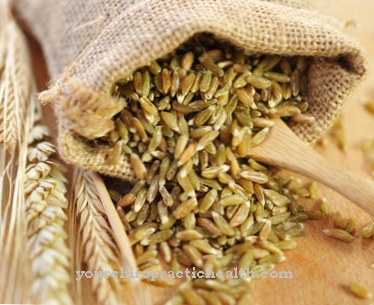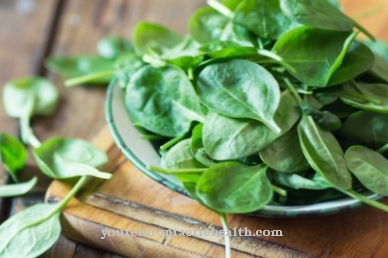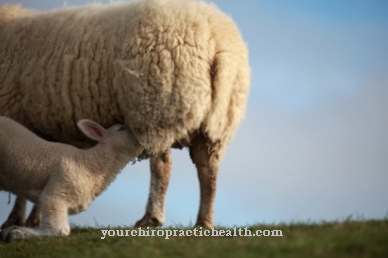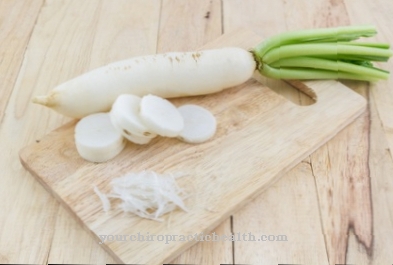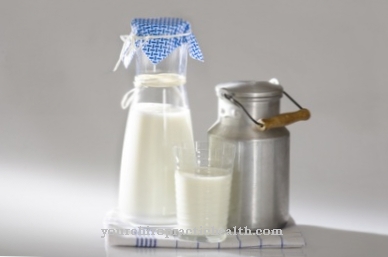These inconspicuous tubers are considered a regional specialty. Teltower turnips are considered to be the smallest and tastiest turnip ever. They have always been a rural food, but are also very popular with gourmets. At the time of Napoleon they were called “navets de Teltow” in France and our poet prince Johann Wolfgang von Goethe also loved their peculiar and difficult to describe taste.
You should know that about Teltower turnips

Teltower turnips are small, beige-colored on the outside and slightly yellowish on the inside, conical root tubers. The beets have a radish-like taste. They require sandy soil and have been cultivated in the area around Berlin, in the "Teltow" landscape, for around three hundred years.
The city of Teltow gave them their name.Originally they were probably imported from England to Pomerania and Brandenburg to make the sandy soil there usable for fodder. However, the taste of these small turnips excited more and more people and so the Teltow farmers finally brought them to the market in tons, especially to Berlin. Here the beets became a common food.
As long as there was enough cheap labor in rural areas, the relatively small amount of harvest and the laborious harvesting activity were not an economic issue because the cultivation was carried out as a follow-up crop after the rye harvest. The beets are sown directly in the field as a subsequent crop in August and harvested from October. The harvest was very laborious, as each turnip had to be chopped out individually by hand. The harvest took place throughout autumn, so this popular root vegetable was also available as a side dish for the Christmas roast.
With the progress of mechanization, but especially due to the change in the agricultural structure in the former GDR, the cultivation of this specialty was no longer economical and the Teltower turnip was forgotten. In the past five decades it was only used by enthusiasts and hobby gardeners on a small scale and for their own use. A community of these small producers founded the "Förderverein für das Teltower Rübchen" in autumn 1999. This association has set itself the goal of making turnips known to a larger audience as a culinary and regional specialty and of revitalizing the market for this small and fine delicacy.
The highlight of the association's work is a turnip festival held in Teltow in September, combined with the appointment of a couple of princes. During the harvest season, special turnip specialties are offered in the city of Teltow, such as turnip cake and turnip ice cream, a special tea, marzipan and a high-proof turnip spirit.
Today, as in the past, Teltower turnips are sown directly in the field as a second crop in August and harvested in October and November. However, harvesting is also possible in early summer when the seeds have been sown from mid-March to early April. The smaller the tuber, the higher the quality. The best quality are turnips that are no larger than 5 cm in diameter. Teltower turnips are available on the market today from May to August and from October to December. This turnip is not hardy. It can be stored in the dark in a cellar, embedded in slightly damp sand. It can be stored in the vegetable compartment of the refrigerator for up to 5 days.
Importance to health
Berlin researchers at the Technical University of Berlin claim that Teltower turnips have a lot more potential than broccoli. Their most important ingredients are glucosinolates and bitter substances. These plant substances are said to be able to prevent cancer, especially in the large intestine.
Glucosinolates (mustard oil glycosides) belong to the secondary plant substances. They protect the plants against pests and environmental influences and are seen as important protective factors against the occurrence of many diseases in us humans. Glucosinolates are chemical compounds that contain sulfur and nitrogen and are formed from amino acids. They give many types of vegetables such as all types of cabbage, cress and radish, radishes and beets their slightly bitter, aromatic taste. Bitter substances are generally considered to be very healthy, they promote healthy digestion and they fight microbes, bacteria and even viruses and fungi.
Ingredients & nutritional values
Teltower turnips not only contain the bitter substances already mentioned, they are a healthy vegetable that is low in calories and fat. They contain all the essential amino acids, vitamins C and E, all the important B vitamins and folic acid. Beets are also rich in essential oils and fiber.
They contain about 90% water and are therefore suitable for a low-calorie diet. Dietary fiber is the edible food component that cannot be digested in the small intestine and that reaches the large intestine intact. In the colon, they are processed by intestinal bacteria. The insoluble dietary fiber in particular protects against constipation by increasing the volume of the stool and reducing the intestinal transit time.
When the dietary fiber is processed by the intestinal bacteria, short-chain fatty acids are also produced. These are an important source of energy for the cells of the colon and presumably inhibit the growth and multiplication of tumor cells.
Intolerances & allergies
There are people who are sensitive to foods from the cruciferous plant family. Teltower turnips are part of it, as well as mustard and all types of cabbage as well as rape, turnip rape and all turnip varieties as well as radishes, radishes, horseradish, kohlrabi, etc. An individual allergy spectrum does not have to remain constant for life.
For example, those who cannot tolerate cauliflower can also have an allergic or intolerance reaction to turnips. The greater the relationship between allergenic substances, the greater the risk of reacting to them over time. So caution is advised.
Shopping & kitchen tips
Although Teltower turnips can be stored quite easily, it is advisable to buy them fresh, for example at the market. With every day of storage in the refrigerator's vegetable compartment, they lose their taste. The tubers should be plump and crisp. Their diameter should not be larger than 5 cm. Before they are eaten or prepared, the turnips must be freed from their outer shell by scraping or peeling.
Preparation tips
This tasty, aromatic root vegetable is excellent for making salads. Cooked it is suitable as a soup or as a side dish to smoked meat, smoked pork, lamb, bratwurst and roast duck and goose. A stew is popular as a main course, supplemented with potatoes and seasoned with sour cream and plenty of parsley.
Traditionally, Teltower turnips are seared whole or halved in butter and caramelized sugar, deglazed with meat broth and steamed. This creates a dark sauce that is lightly bound with a little flour. In addition, there are many other recipes and it is worth trying one or the other.

